Malaysia Airlines tonight announced that the missing flight MH370 crashed into the Indian Ocean with no survivors.
In a statement to the families of those with relatives on board, the airline said: "We deeply regret that we have to assume beyond any reasonable doubt that MH370 has been lost and that none of those on board have survived..we must now accept all evidence suggests the plane went down in the Southern Indian Ocean."
The news came after Chinese relatives in Beijing were called to the second floor of the Lido Hotel for an emergency meeting.
Paramedics attended the scene.
It is believed that relatives in Kuala Lumpur will be flown to Perth tonight.
Announcing the grim news at a press conference in Kuala Lumpur tonight, Prime Minister Najib Razak, said: "This evening, I was briefed by representatives from the UK Accidents Investigation Branch or AAIB. They informed me that Imaset, the UK company that provided the satellite data which indicated the northern and southern corridors has been performing further calculations on the data using a type of analysis never before used in an investigation of this sort.
"They have been able to shed more light on the location of 370’s flight path. Based on the new analysis, Imaset and UK AIB have concluded that MH370 flew along the southern corridor and that its last position was in the middle of the Indian Ocean, west of Perth.
"This is a remote location, far from any possible landing sites. It is therefore with deep sadness, I regret that I must inform you that according to this new data, flight MH370 ended in the Southern Indian Ocean."
Malaysian authorities earlier said that Australian search teams had identified two objects in the Indian Ocean possibly linked to missing Malaysia Airlines flight 370, and it was hoped that they would be picked up within hours.
At a daily press conference into the disappearance of the jet, Malaysia's Acting Transport Minister Hishammuddin Hussein said the Australians had sent a ship to investigate.
The sighting comes just hours after Chinese spotter teams were reported to have seen "some suspicious objects" floating in the sea.
"A few minutes ago, the prime minister received a call from the prime minister of Australia who informed him that Australian search aircraft had located two objects in the Australian search area, one circular and one rectangular," Hussein said.
"HMAS Success is in the vicinity and it is possible that the objects could be received within the next few hours or by tomorrow morning at the latest."
He added: "HMAS Success remains the only vessel in the search area. A number of Chinese vessels are expected to commence arriving within the search area on the 25th of March."
Australia's Prime Minister Tony Abbott confirmed the new find in a speech to parliament.
"The Australian Maritime Safety Authority has advised that objects have been located by a Royal Australian Air Force P3 Orion and I can advise the House that HMAS Success is on scene and is attempting to locate and recover these objects," he said.
"The objects were spotted in the search area about 2500 kilometres southwest of Perth at about 2.45pm our time.
"The crew on board the Orion reported seeing two objects, the first a grey or green circular object and the second an orange rectangular object. These are separate to the objects reported earlier today by a Chinese search aircraft."
![Royal Australian Air Force officer leads a search for MH370 in the southern Indian Ocean on Monday. Photo: Xinhua]() Sounding a note of caution he added: "We don’t know whether any of these objects are from MH370. They could be flotsam. Nevertheless we are hopeful that we can recover these objects soon and that they will take us a step closer to resolving this tragic mystery."
Sounding a note of caution he added: "We don’t know whether any of these objects are from MH370. They could be flotsam. Nevertheless we are hopeful that we can recover these objects soon and that they will take us a step closer to resolving this tragic mystery."
Earlier Monday China's Xinhua news agency said the crew of an Ilyushin-76 transport jet had seen “two relatively big floating objects with many white smaller ones scattered within a radius of several kilometres”.
The larger objects were “white and rectangular”, Xinhua said.
“The crew has reported the coordinates - 95.1113 degrees east and 42.5453 south - to the Australian command centre as well as Chinese icebreaker Xuelong, which is en route to the sea area,” Xinhua said, adding that the the ship was expected to reach the location early Tuesday morning.
The coordinates suggested the objects were about 465 kilometres northeast of where a Chinese satellite spotted a large floating object on March 18.
Google Map: locations of suspicious objects found in Indian Ocean
View MH370: possible locations in a larger map
Meanwhile, the United States Navy is moving one of its high-tech black box detectors closer to the search area for a missing Malaysia Airlines plane in remote seas off the Australian coast, bolstering hopes wreckage of the plane may be found soon.
Malaysian Airlines Flight MH370 vanished from civilian radar screens less than an hour after taking off from Kuala Lumpur with 239 people on board on a flight to Beijing on March 8.
The so-called Towed Pinger Locator will be crucial in finding the black box of the missing jetliner if a debris field is established by an Australian-led international search team scouring an area in the southern Indian Ocean some 2,500 km southwest of Perth.
"If debris is found we will be able to respond as quickly as possible since the battery life of the black box’s pinger is limited," Commander Chris Budde, U.S. Seventh Fleet Operations Officer, said in an emailed statement.
Attention and resources in the search for the Boeing 777 have shifted in recent days from an initial focus north of the equator to an increasingly narrowed stretch of icy sea in the southern Indian Ocean.
![Chinese Antarctic exploration team members aboard Chinese icebreaker Xuelong (Snow Dragon), searche for missing Malaysian Airlines flight MH370 over the southern Indian Ocean. Photo: Xinhua]() Chinese and Japanese military aircraft were joining a 10-strong international fleet of planes scouring the area for the first time on Monday.
Chinese and Japanese military aircraft were joining a 10-strong international fleet of planes scouring the area for the first time on Monday.
A flotilla of Chinese ships, including the icebreaker Xuelong, or Snow Dragon, is also making its way south.
Budde stressed that bringing in the black box detector, which is towed behind a vessel at slow speeds and can pick up "pings" from a black box to a maximum depth of 20,000 feet, was a precautionary measure.
Similarly, Australian Deputy Prime Minister Warren Truss stressed the challenges of the search.
"It’s a lot of water to look for just perhaps a tiny object," Truss told Australian Broadcasting Corp. Radio.
"Today we expect the weather to deteriorate and the forecast ahead is not that good, so it’s going to be a challenge, but we will stick at it," he said.
![The satellite image released by China yesterday showing suspected debris in the southern corridor of the intensified search area in the Indian Ocean. Photo: SCMP]() Two Chinese military Ilyushin IL-76 aircraft, two Australian P3 Orions and two ultra-long range civilian jets were in the early search party on Monday. Another ultra-long range jet, a U.S. Navy P8 Poseidon and two Japanese P3 Orions were due to depart later in the day.
Two Chinese military Ilyushin IL-76 aircraft, two Australian P3 Orions and two ultra-long range civilian jets were in the early search party on Monday. Another ultra-long range jet, a U.S. Navy P8 Poseidon and two Japanese P3 Orions were due to depart later in the day.
Australia was analysing French radar images showing potential floating debris that were taken some 850 kms (530 miles) north of the current search area.
"We only recently got this information and we are still examining it," an AMSA spokeswoman told Reuters by telephone. Malaysia said it received the images on Sunday and passed them on to Australia.
"We are taking it into account but at this stage we are still focused on the same search area," the spokeswoman said, contradicting earlier comments from Australian Deputy Prime Minister Warren Truss that the search area had been expanded north to take into account the French sighting.
![A crew member on a Royal Australian Air Force AP-3C Orion aircraft participating in the Australian Maritime Safety Authority-led search for Malaysia Airlines Flight MH370 in the Southern Indian Ocean. Photo: AFP]() Australia has used a U.S. satellite image of two floating objects to frame its search area.
Australia has used a U.S. satellite image of two floating objects to frame its search area.
The search planes are zeroing in on the areas around where the earlier sightings were made in an effort to find the object identified by China and other small debris, including a wooden pallet, spotted by a search plane on Saturday.
China said the object it had seen on the satellite image was 22 metres long (74ft) and 13 metres (43ft) wide.
It could not be determined easily from the blurred images whether the objects were the same as those detected by Australia, but the Chinese photograph could depict a cluster of smaller objects, said a senior military officer from one of the 26 nations involved in the search.
The wing of a Boeing 777-200ER is approximately 27 metres long and 14 metres wide at its base, according to estimates derived from publicly available scale drawings. Its fuselage is 63.7 metres long by 6.2 metres wide.
NASA said it would use high-resolution cameras aboard satellites and the International Space Station to look for possible crash sites in the Indian Ocean. The U.S. space agency is also examining archived images collected by instruments on its Terra and Aqua environmental satellites, said NASA spokesman Allard Beutel.
![The Commanding Officer of HMAS Success Captain Allison Norris RAN scans the ocean from the ship's bridge during the search for the missing Malaysia Airliner MH370. Photo: Xinhua]() "Our satellites and space-based cameras are designed for long-term scientific data gathering and Earth observation. They’re really not meant to look for a missing aircraft, and obviously NASA isn’t a lead agency in this effort. But we’re trying to support the search, if possible," Beutel said.
"Our satellites and space-based cameras are designed for long-term scientific data gathering and Earth observation. They’re really not meant to look for a missing aircraft, and obviously NASA isn’t a lead agency in this effort. But we’re trying to support the search, if possible," Beutel said.
Truss said the aircraft flying on Monday would be focused on searching by sight, rather than radar, which can be tricky to use because of the high seas and wind in the area. Civilian aircraft, which can carry more people, have joined the search.
Investigators believe someone on the flight shut off the plane’s communications systems. Partial military radar tracking showed it turning west and re-crossing the Malay Peninsula, apparently under the control of a skilled pilot.
That has led them to focus on hijacking or sabotage, but investigators have not ruled out technical problems. Faint electronic "pings" detected by a commercial satellite suggested it flew for another six hours or so, but could do no better than place its final signal on one of two vast arcs north and south.
![US Naval pilots attached to Patrol Squadron (VP) 16, fly a P-8A Poseidon during a mission over the Indian Ocean to assist in search and rescue operations for Malaysia Airlines flight MH370. Photo: Reuters]() The lack of solid news has meant a prolonged and harrowing wait for families of the passengers, who have complained in both Beijing and Kuala Lumpur about the absence of information.
The lack of solid news has meant a prolonged and harrowing wait for families of the passengers, who have complained in both Beijing and Kuala Lumpur about the absence of information.
A Malaysian statement said a "high-level" team briefed relatives in Beijing on Sunday in a meeting that lasted more than six hours.
While the southern arc is now the main focus of the search, Malaysia says efforts will continue in both corridors until confirmed debris are found.
"We still don’t even know for certain if the aircraft is in this area," Truss said of the southern Indian Ocean search.
"We’re just clutching at whatever little piece of information that comes along to try to find the place we can concentrate the efforts."
In a statement to the families of those with relatives on board, the airline said: "We deeply regret that we have to assume beyond any reasonable doubt that MH370 has been lost and that none of those on board have survived..we must now accept all evidence suggests the plane went down in the Southern Indian Ocean."
The news came after Chinese relatives in Beijing were called to the second floor of the Lido Hotel for an emergency meeting.
Paramedics attended the scene.
It is believed that relatives in Kuala Lumpur will be flown to Perth tonight.
Announcing the grim news at a press conference in Kuala Lumpur tonight, Prime Minister Najib Razak, said: "This evening, I was briefed by representatives from the UK Accidents Investigation Branch or AAIB. They informed me that Imaset, the UK company that provided the satellite data which indicated the northern and southern corridors has been performing further calculations on the data using a type of analysis never before used in an investigation of this sort.
"They have been able to shed more light on the location of 370’s flight path. Based on the new analysis, Imaset and UK AIB have concluded that MH370 flew along the southern corridor and that its last position was in the middle of the Indian Ocean, west of Perth.
"This is a remote location, far from any possible landing sites. It is therefore with deep sadness, I regret that I must inform you that according to this new data, flight MH370 ended in the Southern Indian Ocean."
Malaysian authorities earlier said that Australian search teams had identified two objects in the Indian Ocean possibly linked to missing Malaysia Airlines flight 370, and it was hoped that they would be picked up within hours.
At a daily press conference into the disappearance of the jet, Malaysia's Acting Transport Minister Hishammuddin Hussein said the Australians had sent a ship to investigate.
The sighting comes just hours after Chinese spotter teams were reported to have seen "some suspicious objects" floating in the sea.
"A few minutes ago, the prime minister received a call from the prime minister of Australia who informed him that Australian search aircraft had located two objects in the Australian search area, one circular and one rectangular," Hussein said.
"HMAS Success is in the vicinity and it is possible that the objects could be received within the next few hours or by tomorrow morning at the latest."
He added: "HMAS Success remains the only vessel in the search area. A number of Chinese vessels are expected to commence arriving within the search area on the 25th of March."
Australia's Prime Minister Tony Abbott confirmed the new find in a speech to parliament.
"The Australian Maritime Safety Authority has advised that objects have been located by a Royal Australian Air Force P3 Orion and I can advise the House that HMAS Success is on scene and is attempting to locate and recover these objects," he said.
"The objects were spotted in the search area about 2500 kilometres southwest of Perth at about 2.45pm our time.
"The crew on board the Orion reported seeing two objects, the first a grey or green circular object and the second an orange rectangular object. These are separate to the objects reported earlier today by a Chinese search aircraft."
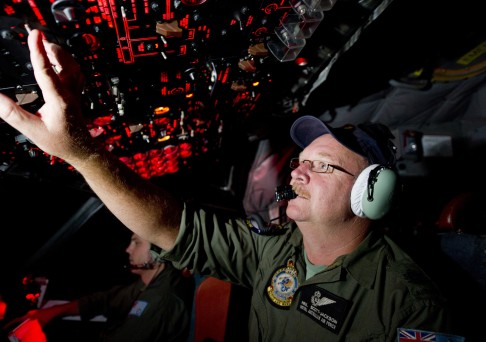 Sounding a note of caution he added: "We don’t know whether any of these objects are from MH370. They could be flotsam. Nevertheless we are hopeful that we can recover these objects soon and that they will take us a step closer to resolving this tragic mystery."
Sounding a note of caution he added: "We don’t know whether any of these objects are from MH370. They could be flotsam. Nevertheless we are hopeful that we can recover these objects soon and that they will take us a step closer to resolving this tragic mystery."Earlier Monday China's Xinhua news agency said the crew of an Ilyushin-76 transport jet had seen “two relatively big floating objects with many white smaller ones scattered within a radius of several kilometres”.
The larger objects were “white and rectangular”, Xinhua said.
“The crew has reported the coordinates - 95.1113 degrees east and 42.5453 south - to the Australian command centre as well as Chinese icebreaker Xuelong, which is en route to the sea area,” Xinhua said, adding that the the ship was expected to reach the location early Tuesday morning.
The coordinates suggested the objects were about 465 kilometres northeast of where a Chinese satellite spotted a large floating object on March 18.
Google Map: locations of suspicious objects found in Indian Ocean
View MH370: possible locations in a larger map
Meanwhile, the United States Navy is moving one of its high-tech black box detectors closer to the search area for a missing Malaysia Airlines plane in remote seas off the Australian coast, bolstering hopes wreckage of the plane may be found soon.
Malaysian Airlines Flight MH370 vanished from civilian radar screens less than an hour after taking off from Kuala Lumpur with 239 people on board on a flight to Beijing on March 8.
The so-called Towed Pinger Locator will be crucial in finding the black box of the missing jetliner if a debris field is established by an Australian-led international search team scouring an area in the southern Indian Ocean some 2,500 km southwest of Perth.
"If debris is found we will be able to respond as quickly as possible since the battery life of the black box’s pinger is limited," Commander Chris Budde, U.S. Seventh Fleet Operations Officer, said in an emailed statement.
Attention and resources in the search for the Boeing 777 have shifted in recent days from an initial focus north of the equator to an increasingly narrowed stretch of icy sea in the southern Indian Ocean.
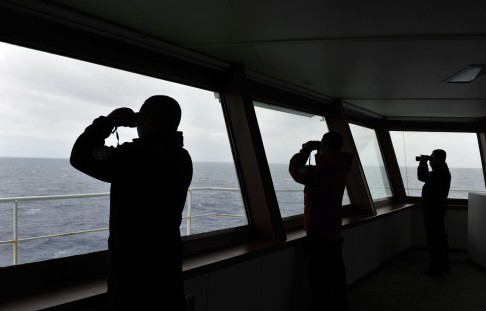 Chinese and Japanese military aircraft were joining a 10-strong international fleet of planes scouring the area for the first time on Monday.
Chinese and Japanese military aircraft were joining a 10-strong international fleet of planes scouring the area for the first time on Monday.A flotilla of Chinese ships, including the icebreaker Xuelong, or Snow Dragon, is also making its way south.
Budde stressed that bringing in the black box detector, which is towed behind a vessel at slow speeds and can pick up "pings" from a black box to a maximum depth of 20,000 feet, was a precautionary measure.
Similarly, Australian Deputy Prime Minister Warren Truss stressed the challenges of the search.
"It’s a lot of water to look for just perhaps a tiny object," Truss told Australian Broadcasting Corp. Radio.
"Today we expect the weather to deteriorate and the forecast ahead is not that good, so it’s going to be a challenge, but we will stick at it," he said.
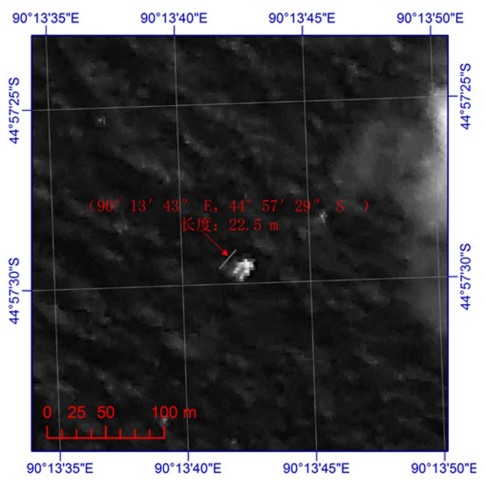 Two Chinese military Ilyushin IL-76 aircraft, two Australian P3 Orions and two ultra-long range civilian jets were in the early search party on Monday. Another ultra-long range jet, a U.S. Navy P8 Poseidon and two Japanese P3 Orions were due to depart later in the day.
Two Chinese military Ilyushin IL-76 aircraft, two Australian P3 Orions and two ultra-long range civilian jets were in the early search party on Monday. Another ultra-long range jet, a U.S. Navy P8 Poseidon and two Japanese P3 Orions were due to depart later in the day.Australia was analysing French radar images showing potential floating debris that were taken some 850 kms (530 miles) north of the current search area.
"We only recently got this information and we are still examining it," an AMSA spokeswoman told Reuters by telephone. Malaysia said it received the images on Sunday and passed them on to Australia.
"We are taking it into account but at this stage we are still focused on the same search area," the spokeswoman said, contradicting earlier comments from Australian Deputy Prime Minister Warren Truss that the search area had been expanded north to take into account the French sighting.
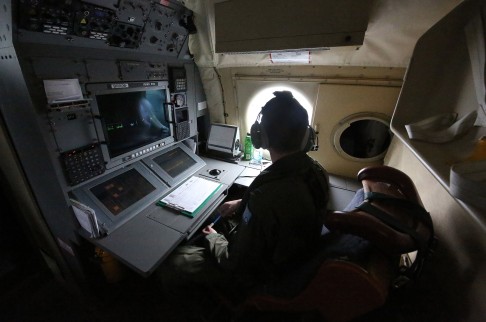 Australia has used a U.S. satellite image of two floating objects to frame its search area.
Australia has used a U.S. satellite image of two floating objects to frame its search area.The search planes are zeroing in on the areas around where the earlier sightings were made in an effort to find the object identified by China and other small debris, including a wooden pallet, spotted by a search plane on Saturday.
China said the object it had seen on the satellite image was 22 metres long (74ft) and 13 metres (43ft) wide.
It could not be determined easily from the blurred images whether the objects were the same as those detected by Australia, but the Chinese photograph could depict a cluster of smaller objects, said a senior military officer from one of the 26 nations involved in the search.
The wing of a Boeing 777-200ER is approximately 27 metres long and 14 metres wide at its base, according to estimates derived from publicly available scale drawings. Its fuselage is 63.7 metres long by 6.2 metres wide.
NASA said it would use high-resolution cameras aboard satellites and the International Space Station to look for possible crash sites in the Indian Ocean. The U.S. space agency is also examining archived images collected by instruments on its Terra and Aqua environmental satellites, said NASA spokesman Allard Beutel.
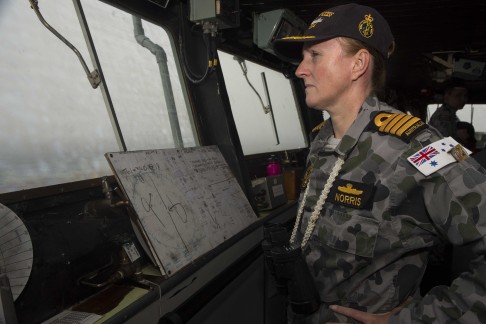 "Our satellites and space-based cameras are designed for long-term scientific data gathering and Earth observation. They’re really not meant to look for a missing aircraft, and obviously NASA isn’t a lead agency in this effort. But we’re trying to support the search, if possible," Beutel said.
"Our satellites and space-based cameras are designed for long-term scientific data gathering and Earth observation. They’re really not meant to look for a missing aircraft, and obviously NASA isn’t a lead agency in this effort. But we’re trying to support the search, if possible," Beutel said.Truss said the aircraft flying on Monday would be focused on searching by sight, rather than radar, which can be tricky to use because of the high seas and wind in the area. Civilian aircraft, which can carry more people, have joined the search.
Investigators believe someone on the flight shut off the plane’s communications systems. Partial military radar tracking showed it turning west and re-crossing the Malay Peninsula, apparently under the control of a skilled pilot.
That has led them to focus on hijacking or sabotage, but investigators have not ruled out technical problems. Faint electronic "pings" detected by a commercial satellite suggested it flew for another six hours or so, but could do no better than place its final signal on one of two vast arcs north and south.
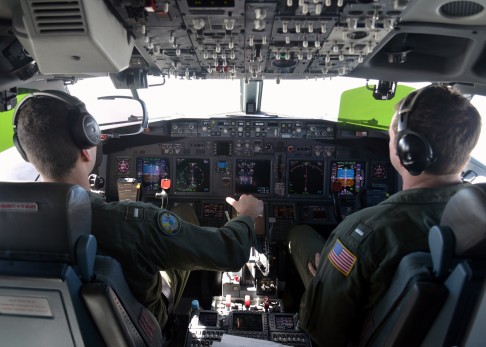 The lack of solid news has meant a prolonged and harrowing wait for families of the passengers, who have complained in both Beijing and Kuala Lumpur about the absence of information.
The lack of solid news has meant a prolonged and harrowing wait for families of the passengers, who have complained in both Beijing and Kuala Lumpur about the absence of information.A Malaysian statement said a "high-level" team briefed relatives in Beijing on Sunday in a meeting that lasted more than six hours.
While the southern arc is now the main focus of the search, Malaysia says efforts will continue in both corridors until confirmed debris are found.
"We still don’t even know for certain if the aircraft is in this area," Truss said of the southern Indian Ocean search.
"We’re just clutching at whatever little piece of information that comes along to try to find the place we can concentrate the efforts."




_9M-MRO_-_MSN_28420_404_(9272090094).jpg/300px-Boeing_777-200ER_Malaysia_AL_(MAS)_9M-MRO_-_MSN_28420_404_(9272090094).jpg)













0 comments :
Post a Comment